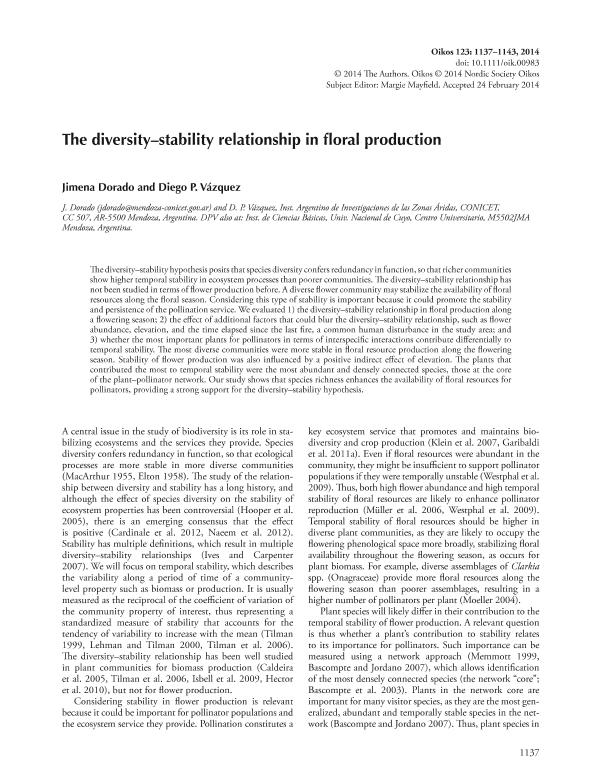Artículo
The diversity–stability relationship in floral production
Fecha de publicación:
04/2014
Editorial:
Wiley
Revista:
Oikos
ISSN:
0030-1299
Idioma:
Inglés
Tipo de recurso:
Artículo publicado
Clasificación temática:
Resumen
The diversity–stability hypothesis posits that species diversity confers redundancy in function, so that richer communities show higher temporal stability in ecosystem processes than poorer communities. The diversity–stability relationship has not been studied in terms of flower production before. A diverse flower community may stabilize the availability of floral resources along the floral season. Considering this type of stability is important because it could promote the stability and persistence of the pollination service. We evaluated 1) the diversity–stability relationship in floral production along a flowering season; 2) the effect of additional factors that could blur the diversity–stability relationship, such as flower abundance, elevation, and the time elapsed since the last fire, a common human disturbance in the study area; and 3) whether the most important plants for pollinators in terms of interspecific interactions contribute differentially to temporal stability. The most diverse communities were more stable in floral resource production along the flowering season. Stability of flower production was also influenced by a positive indirect effect of elevation. The plants that contributed the most to temporal stability were the most abundant and densely connected species, those at the core of the plant–pollinator network. Our study shows that species richness enhances the availability of floral resources for pollinators, providing a strong support for the diversity–stability hypothesis.
Archivos asociados
Licencia
Identificadores
Colecciones
Articulos(IADIZA)
Articulos de INST. ARG DE INVEST. DE LAS ZONAS ARIDAS
Articulos de INST. ARG DE INVEST. DE LAS ZONAS ARIDAS
Citación
Dorado, Jimena; Vazquez, Diego P.; The diversity–stability relationship in floral production; Wiley; Oikos; 123; 9; 4-2014; 1137-1143
Compartir
Altmétricas




